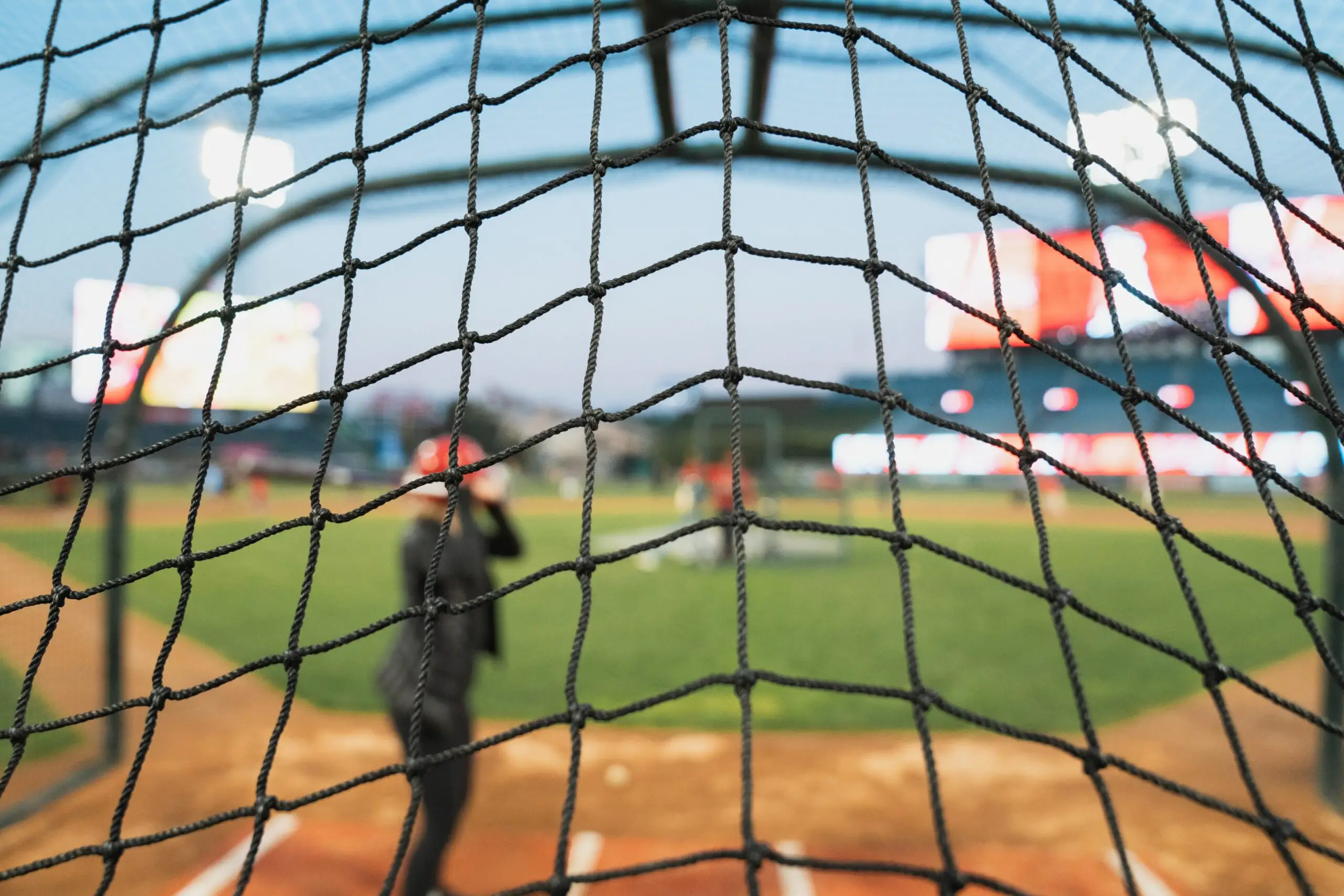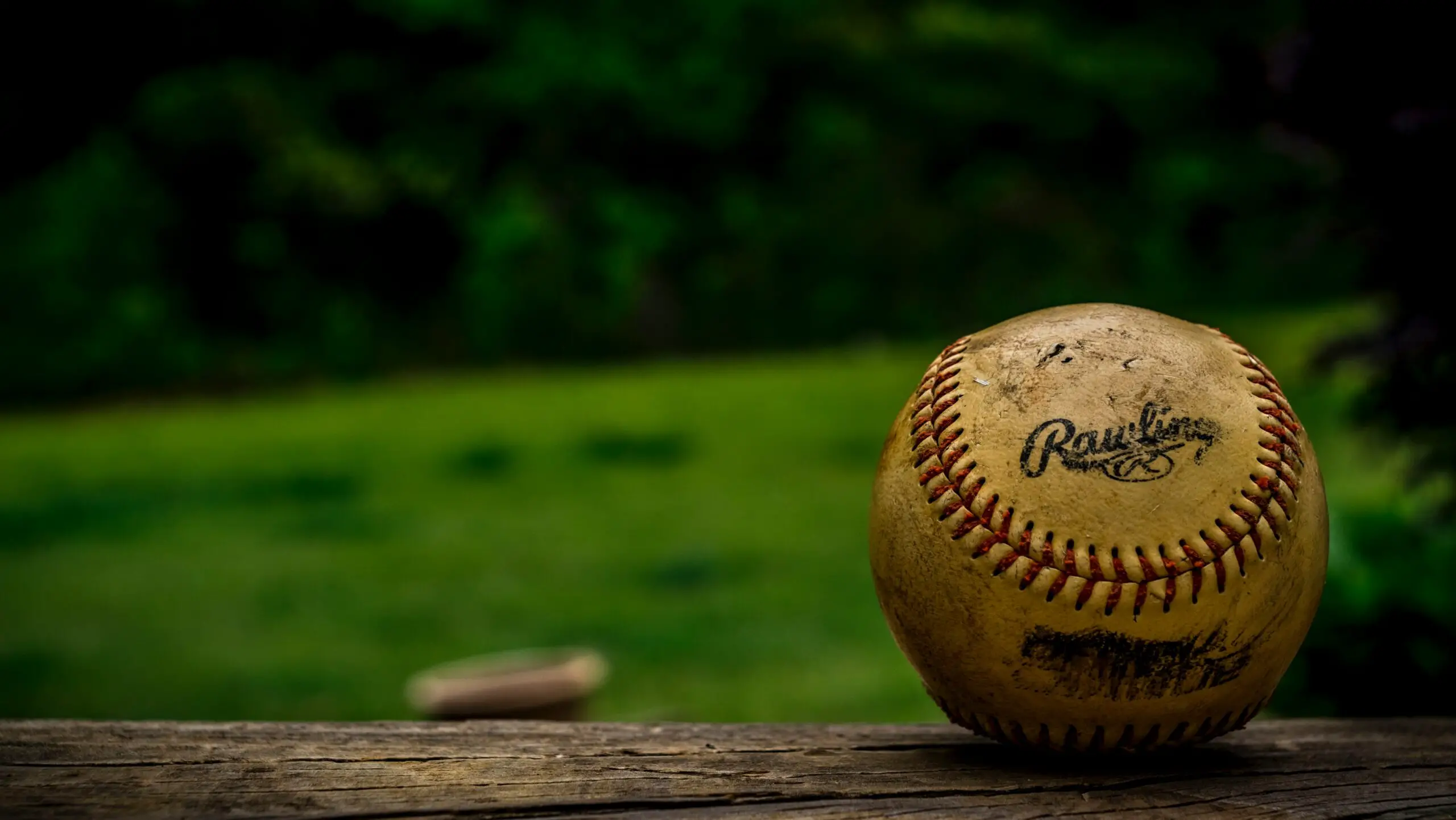Even the best pitchers in the game had to start somewhere with their pitching mechanics as a young pitcher.
Whether you’re new to baseball or you’ve been playing for years, there’s always more to learn about your delivery.
This is especially true when it comes to pitching. You might have perfected what you believe to be the perfect curveball, but is your form correct?
Turns out, there’s a science behind the proper pitching mechanics. While everyone will have his or her own nuances, understanding them can help you deliver a more consistent, accurate throw.
Today, we’re delivering a step-by-step guide that can help you ace your correct pitching form, increase your strikeout rate and make sure you stay injury-free on the mound. Learning the different baseball pitch grips and how to throw each pitch will also be an essential part of your success as a pitcher.
Ready to learn more? Let’s get started!
What’s in a Pitch?
It looks simple and it’s over in seconds. Yet, the reality is that a baseball pitch is one of the most dynamic and complex sports skills that you can learn.
In fact, during a typical pitch, the internal rotation velocity in your shoulder can reach between 7500 and 7700 degrees per second. This makes it the fastest joint motion in any athletic activity.
It also puts the pitcher in a vulnerable position. Unless you’re following the proper pitching mechanics, that speed and force combined could wreak havoc on your upper body. That’s why it’s important to learn how to pitch a baseball the right way.
As you read this guide, keep in mind that no two pitches are exactly alike. Every one is individualized, dependent on certain characteristics of the pitcher, including:
- Strength
- Size
- Balance
- Coordination
- Flexibility
- Leverage
That’s why your trainer will work with you to define your own personal pitching style designed to accommodate your specific physical capabilities, limitations, and aptitude.
When to Change a Successful Pitch
At this point, you might be exclaiming, “But my pitches are successful! My strikeout record is impressive and I’ve perfected my skill.” If this is the case, your trainer will likely allow you to continue fine-tuning your natural delivery. He or she will work with you to refine your technique and ensure that your pitch is as uniform as possible.
However, there are some reasons why your trainer might deem it necessary to tweak your pitch. These include:
- Your pitching mechanics leave your arm unnecessarily stressed or fatigued
- If your pitching motions are incorrect to the point that they could cause an injury
- When your pitching motion delivers inconsistent control or performance
- If your current techniques are holding you back from reaching your true pitching potential
- You have room for improvement for things like pitching power or adding velocity to your pitches
If any of the above statements are true, it’s time to take a second look at your skill and go back to pitching basics. It’s helpful to start from the very beginning and re-learn the craft, making sure you’re in the right form every time you switch positions. Read on to learn the precise body movements associated with each step.
Pitching Motion Body Movements
Forget picking up the ball and winding up immediately. First, let’s explore the pitching fundamentals to know.
Step 1: Starting Stance/Preliminary Stance
When you think about pitching techniques, great balance might not be the first idea that springs to mind. Yet, it plays a critical role in helping you start off your pitch on the right foot.
To enter the starting stance, keep your shoulders relaxed and your body squared off to the plate. Then, call upon that balance to keep you there.
What should you do with your feet?
Take note of the foot on the same side as your pitching arm, known as your pivot foot. The spikes on these shoes should be in front of the rubber and opened a little. Meanwhile, position your free foot (on the same side as your glove) right next to your pivot foot or a little behind it, spaced about a shoulder’s width apart.
While there’s no hard and fast rule about which side of the plate you should stand on, most experts recommend standing on the same side as your dominant throwing hand. That means if you pitch with your right hand, you’ll stand to the right of the plate, and vice versa.
With your feet in the right stance, don’t forget about your hands! Place them at your midchest or belt area, whichever position feels the most comfortable. While you’re at it, remember to keep your pitching hand and wrist deep inside of your glove. This helps conceal your specific grip and ball from the batter, teammates or coaches.
Finding it difficult to establish a firm grip? There are many reasons why you might fumble around, including:
- Your grip strength
- The length of your fingers
- Your hand size
If this is the case, you can learn different pitching grip variations. Try a few of them and select the one that feels like the most natural fit.
The final part of your starting stance is more mental than physical. Keep your eyes fixed straight ahead on the target. Not only does this help you communicate more clearly, but it also gives you a confidence boost, relaxes your nerves and prevents distraction.
Step 2: Wind Up (Hand Pump, Rocker Step, Pivot)
Once you receive the go-ahead from the catcher, it’s time to begin winding up the ball. Though the motion appears seamless, it’s actually the combination of two different motions: the hand pump and the rocker step. Let’s take a closer look at the basics of each.
Hand Pump
You’ve likely seen many different kinds of pitches. While they’re unique, they all begin with a basic hand pump. You’ll have a little bit of freedom and flexibility, here. For instance, you might choose to lift your hands in the following positions:
- Over your head
- Over and behind your head
- To your chest
- Keep them still
Keep in mind that while over-the-head pitches look impressive, they’re best reserved for pitchers with little to no coordination issues. If your balance is off, stick to lifting your hands only to your chest. You can also keep your hands still to maintain as much control as possible.
Rocker Step
As you begin the pitch, you’ll transfer the weight from your pivot foot to your free foot. This is simply a short step straight backward, measuring no more than six inches long. You can step at a 90-degree angle right to the side, or at a less-sharp 45-degree one.
In most cases, the latter is preferable because it’s helps position the lead foot in front of the rubber as you pivot. Yet, there are some pitching professionals who recommend a step-back approach over a side one. Proponents argue that it enables pitchers to keep their bodies in line with the target. It can even boost your momentum and velocity.
When watching the game, it’s difficult to even notice the rocker step as it occurs, but it sets the stage for the rest of your motion.
As you briefly move your body back into a natural position, you help prepare your muscles to move forward. This step also helps incorporate rhythm and tempo into your pitch.
Pivot
After you’ve completed the rocker step, it’s time to move into the essential pivot.
This maneuver squares your body back up, placing your pivot foot in a parallel position along the rubber’s front edge.
If you stepped to the side in your rocker step, now is when you’ll be thankful you kept to the motion to the recommended six inches or fewer. This keeps your head above your pivot foot and mitigates any unnecessary movements.
The key to a successful and steady pivot?
Imagine a line that goes from the middle of your back foot and reaches all the way to the target hitter. In baseball, this is called your “midline.” If you move your body away from the midline as you pitch, you’ll have to even harder to resume the correct position. The rocker step and pivot are two movements that could upset your balance, so keep your focus and stay on the midline to save time and maintain your momentum.
Step 3: Leg Lift
Arguably one of the most iconic movements in the sport, a leg lift helps you keep your coordination and concentration as you prepare to release the baseball.
With your pivot foot in place, you’re ready to perform the forward rock that leads to your leg lift. As you enter into this position, you’ll rotate your front hip closed to a 90-degree angle. Angling your lead leg knee back slightly, pointing toward second base, can help you close off your hips.
Resist the urge to swing your foot upward in a haphazard motion.
Rather, remember to lift and lead with your knee to keep your balance. Once the lift leg is up, that foot can hang down right from your knee. Once your lead leg knee has reached your desired height (not before), you can let your body drift forward.
Measuring Maximum Knee Height
Not sure how high to lift your knee?
Try to reach your thigh just a little higher than parallel to the ground. You want it high enough to give you momentum, but not so high that you’re thrown off-balance. For most pitchers, this means raising their knee between 60% and 70% of their total height.
Step 4: Stride
Wondering why some pitchers have a higher ball velocity than others? Studies show that up to 70% of that variation is attributed to differences in stride length.
Once you’ve reached your appropriate knee height, you’ll start your stride.
Your stride refers to the motion you enter as you move your body to the side of the rubber and direct your entire mass toward your target. The posture and form you assume at this time are critical and can dictate how successful the overall pitch becomes.
To reach maximum velocity, you must be able to move your body quickly into a side lunge, shifting from your back leg to your front leg in one seamless motion. Thus, your stride length demonstrates how fast you’re moving away from the rubber, as well as how capable you are of building forward momentum. In most cases, a pitcher’s stride length will be close to his or her body height.
Note that during your stride, you aren’t pushing off the rubber to gain power. Instead, you’re drifting your body forward. When your stride foot has landed, it can help stabilize your body.
Your stride foot should land flat, closing at a 20-degree or 30-degree angle. Position your lead knee over or a little inside of your ankle to maximize stability.
Proper Hip Placement
As your lead leg (and stride leg) lowers, it’s time to drive away from the rubber, leading with your front hip. This means positioning it to move toward home plate while your stride foot travels downward, landing right above the surface of the mound. Keep your lead leg bent along the midline during this time rather than swinging it out or extending it.
It’s common for pitchers to misalign their posture during this step, failing to keep their head positioned over the center of their upper body, between their two feet. As a result, they tend to lead the stride with their front shoulder instead of their hip. Remembering proper lower-body mechanics can improve the power behind your stride.
Placing Your Back Foot
You know where your lead foot is heading, but what about your back foot?
Think first about the position you’re trying to achieve. You need your front shoulder and hip to point at your target before you initiate the leg drive. You need to force your body sideways without turning too early over your back leg or hip.
To this end, you should plant your back foot as firmly into the ground as possible. Throughout the stride, try to keep it parallel to the rubber for as long as you can.
As your lead foot begins to make contact with the landing, your back foot can peel away from the rubber as you extend your leg.
Driving Your Back Leg
When your lead leg drive is complete, your back leg should be almost fully extended. This will occur just before your stride foot turns and makes contact with the ground.
Hand Break During a Stride
At what point do your hands break free from one another during a stride?
They should separate between your chest and your belt, keeping close to your body. Rather than breaking apart sporadically, try to achieve a pendulum-like motion that travels down, back and up.
Most importantly, remember not to rush this step. For best results, keep your hands together as long as possible, only breaking them after your lead leg starts moving downward.
Try leaning forward and shifting your weight toward your target before you take the ball out of your glove. As you wait in this way, you’ll help prevent your arm from entering the cocked position prematurely, which can take power out of your throw.
Throwing Arm Movement
After your hands separate, move your throwing arm down, back and up again toward a cocked position. This should be a smooth, continuous motion that occurs along the midline. Keep your fingers on top of the ball.
Glove Arm Movement
Knowing what to do with your glove arm can help improve your trunk rotation, trunk arching, and shoulder alignment all at the same time. While your throwing arm is still in the pendulum motion, go ahead and get your glove arm up as soon as possible.
The two motions you can complete with your glove arm include firing the glove or leading with the elbow.
If you fire the glove, this means you move the glove and your lead arm toward the plate, following the same direction as your stride foot. Then, you whip the glove and your elbow down and back outside of your lead hip.
When you lead with the elbow, this means leading your right toward the plate. Aligning it with your stride foot contact, you’ll then move your elbow down and back outside of your lead hip.
Step 5: Cocking Your Arm
Once you make stride foot contact, your pitching hand will be about cap high.
If you’re a right-handed pitcher, your hand will be closer to third base than your elbow. Extend your hand and forearm back just a little further than your elbow, keeping your fingers on top of the ball.
At the maximum cocked position, most pitchers will have their ball cap high or above. Their elbow will be shoulder-high and their forearm will be almost perpendicular to the ground. A right-handed pitcher’s palm will face the shortstop, while a left-handed pitcher’s palm will face the second baseman.
Extend your wrist back to assume a loaded position.
Step 6: External Rotation
With your arms in position, your hips, trunks, and shoulders will rotate and square off to the plate. As this occurs, your shoulder will externally rotate, causing your elbow to lead forward.
This causes your forearm and hand to fire forward. As your trunk flexes after being extended, your arm and hand will accelerate forward toward the release point.
Step 7: Releasing the Ball
Finally, it’s time to see how the pitch flies.
Your hand will come parallel to and eventually cross your trunk and face. As it does so, your wrist will snap back into a neutral position upon ball release. Keep your fingers behind and on top of the ball, angling them outward around 45 degrees.
After release, your hand and arm will instinctively turn downward or inward, a response known as deceleration. Aim to keep this motion as smooth and controlled as possible to avoid putting excessive stress on your shoulder muscles. Instead, focus that pressure on your trunk and legs.
Step 8: Following Through
After release, your body weight returns down on your braced lead leg. At the same time, your throwing shoulder will come down over your lead leg. Your arm and hand will complete their motion outside of your lead leg shin.
For some pitchers, the force of the pitch is so strong that they require a jump-step to regain their balance afterward. All in this position should bring their glove back in front of their body quickly as a preventative safety measure. For the same reason, pitchers should back up onto the mound when receiving the catcher’s return throw.
A Hands-On Look at Pitching Mechanics
Now that we’ve reviewed the basic pitching and throwing mechanics, are you ready to grab a ball and glove and hit the field yourself?
If so, we’d love to help.
We offer guides, information, and reviews centered on this beloved pastime. Check out our pitching archives and learn more about how to hone and perfect your craft.




Pornografia portugues
melhor pornografia portugues da internet